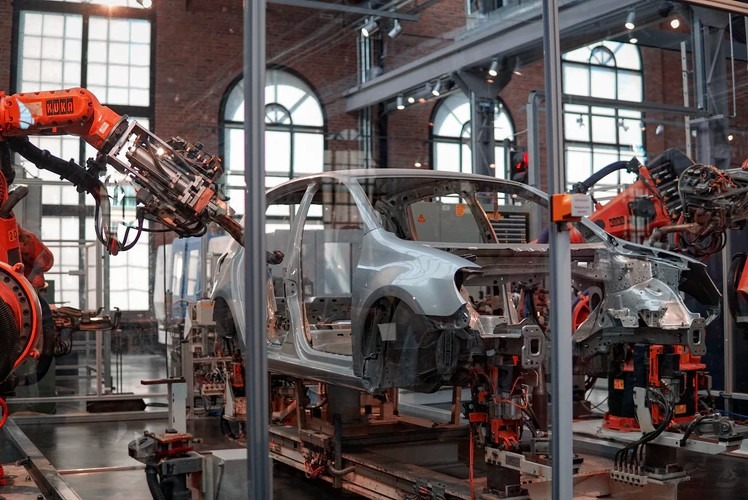Injection molding is one of the most widely utilized plastics manufacturing processes. This is understandable given that it provides a realistic solution for mass-producing high-quality injection automobile parts from a variety of polymers. Plastic injection molding is a critical production process in the automotive sector, where consistency, safety, and quality are critical. As a machine tooling company or an automobile manufacturer, you need to be aware of the injection molding basics that are prevalent in the automotive industry worldwide.
As new technology arises, plastic injection molding advances. Along with this advancement, new options are available to create car parts, which are then used in car manufacturing. By 2024, the global plastic injection molding industry is anticipated to be worth $345 billion.
The automotive industry is a major contributor to this expansion. The industry is striving hard to use durable plastic components in order to improve the fuel efficiency of electric vehicles by decreasing their weight.
Advantages of Injection Molding
Injection molding is a well-established manufacturing process in which molten plastic ingredients are injected into a mold cavity. The melted plastic cools and solidifies, and the final part is extracted by the producers.
Injection molding is a reliable method for making solid plastic parts with a high-quality finish, even if the mold design process is crucial and challenging. A poorly constructed mold might result in flaws.
Here are some of the advantages of Injection molding process in the automobile industry:
1. Process is Repeatable
Repeatability, or the ability to consistently create similar parts, is critical in the automotive business. The final molded car parts produced using the mold are nearly identical since automotive plastic injection molding often depends on sturdy metal molds.
Although several variables influence injection molding, it is a fairly reproducible process if the mold is well-designed and finished.
2. Provides High Precision and Surface Finish
Injection molding is great for creating plastic parts with basic geometries that have a high level of surface smoothness. When creating parts, manufacturers have a variety of surface textures to choose from, such as glossy, rough, or matte, which they put directly into the mold rather than the molded part.
Different plastic materials, on the other hand, have an impact on the ultimate surface polish.
3. Highly Scalable
It is, nevertheless, a highly scalable method with lower overall costs as the firm produces more pieces. Injection molding is thus advantageous to the company in bulk production applications.
On the other hand, injection molding tooling expenses may limit the process’s cost efficiency for anything less than mass manufacturing. With a high demand for injection molding in industries, companies are working to make the process more scalable and cost-efficient. Solutions like China injection molds are becoming more popular for their less cost and high quality.
5 Key Uses of Injection Molding in the Automobile Industry
Injection molding is one of the most common ways of manufacturing plastic parts in the automobile sector. However, a complete list of injection-molded plastic components in a car would be difficult to compile, so we’ll focus on a few of the most important.
1. Increasing Car Comfort
Control performance, interior decoration, and other useful features are all priorities for car customers. Drivers aim to make their time behind the wheel more engaging and productive as they spend more time there.
Durable polymers make it possible to improve the driving pleasure. The goal is to increase consumer desire to buy by improving handling performance, interior finishes, convenience features, entertainment systems, intelligent technologies, driver assistance, minimizing vibration, and reducing cabin noise.
Injection molded parts with high performance play a critical role in accomplishing these objectives.
2. Under the Hood Components
Many under-the-hood components that were once composed of metal have been replaced with plastic in the last two decades or more.
Robust polymers including ABS, Nylon, and PET are commonly used in these applications. Injection molding, on the other hand, is now used to build items like cylinder head covers and oil pans. When compared to metal parts, this approach has reduced weights and costs.
3. Interior Components
Many automobile interior pieces are also produced utilizing automotive plastic injection molding. Instrumentation, interior surfaces, dashboard faceplates, doorknobs, glove boxes, air vents, and other items are among them. In addition, injection molding is used to create decorative plastic parts.
4. Exterior Components
Vehicle exterior components like fenders, grilles, bumpers, door panels, floor rails, lamp housings, and other parts are all made utilizing injection molding. Splash guards are a great example of how durable injection molded parts can be useful.
Rubber or other durable and flexible materials are frequently used in the components that shield the car from road debris and prevent splashing.
5. Protection Cases of Electrical Components
Vehicles consist of various electrical components. They need to be protected from external factors like water and heat. With the help of plastic injection molding techniques, protection cases are made using thermoplastics. These cases are used as an external covering for electrical machinery and sensors present in the vehicle.
Plastic provides immunity to sudden shock or any sort of physical damage to the components.
Conclusion
In order to keep up with competition and rising production rates, injection molding is becoming increasingly important in the automotive sector. In addition to manufacturing parts with efficiency and affordability, injection molders have been essential in lowering the cost of heavy metals by offering new material options.
A key benefit of injection molding is the re-usability of the molds and the production of uniform parts. All these factors combined have made injection molding a popular and a go-to method for manufacturing automobile parts.

